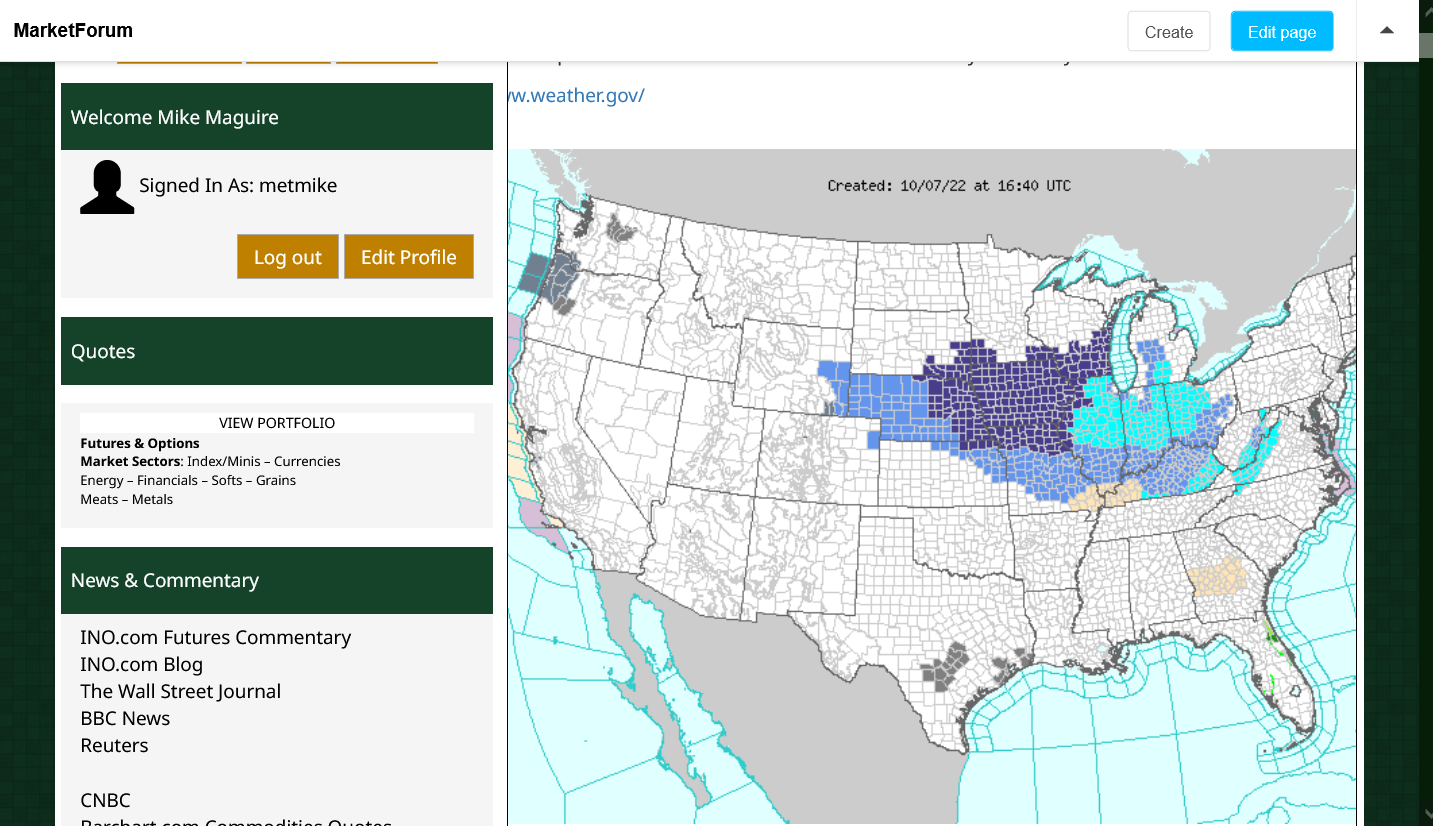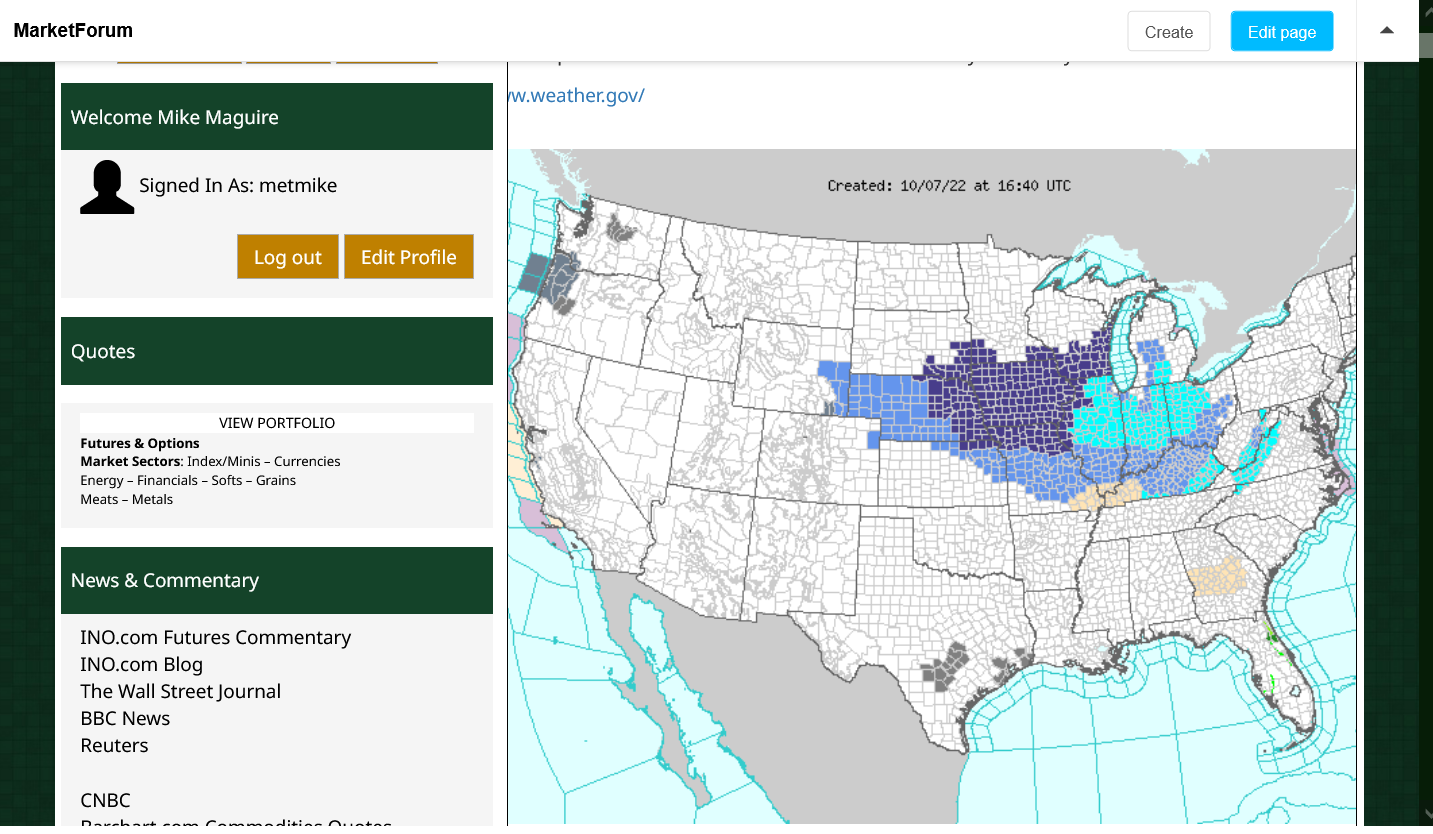
U.S. #corn is being harvested slightly slower than the trade expected but #soybeans are a bit faster. 20% of corn, 22% of soybeans and 22% of #cotton were done as of Sunday. Winter #wheat planting is slower than expected at 40% complete.
Drought in the Plains starting to take a toll on HRW planting and emergence.
No drought here in Valley Forge,Pa
Thanks MIke:
#Argentina's grain belt just had its driest September in 16 years, right as #corn sowing began. The first 9 months of 2022 were the driest since 2013, some 23% below the decade average. Oct-Dec rains are important for both corn & soy yields, but the forecast isn't favorable.
#Argentina's weather service last week predicted warm and dry weather for the next three months - during the planting of #corn & #soybeans. Corn planting is already behind normal, but past results suggest later planting by itself does not necessarily hurt yields.
La Nina's (cool water in tropical Pacific) are often bad news and increase drought risk in that area of South America.
https://www.cpc.ncep.noaa.gov/products/Global_Monsoons/gl_obs.shtml

https://www.cpc.ncep.noaa.gov/products/Precip_Monitoring/Figures/global/n.90day.figb.gif

Over the past 1,000 years, the North American Southwest has endured nine megadroughts averaging nearly 32 years in length, while the South American Southwest saw 12 megadroughts lasting an average of 21 years.
Jon Parton / August 30, 2021
(CN) — La Niña, the climate event that causes water to be colder than normal in the eastern Pacific, has now been shown by new research released Monday to be responsible for simultaneous megadroughts in the North and South American Southwest over the past 1,000 years.
Megadroughts are extended periods of drought that last at least 20 years. In a study published in the journal Nature, researchers found that these megadroughts occurred simultaneously in the North American and South American Southwest “regularly” and often during a La Niña event.
The researchers used paleoclimate proxies, archival data about rainfall temperature in the ancient past, and created a climate model that compared the data to past megadrought events.
They discovered over the past millennium that 9 megadroughts occurred in the North American Southwest, with 12 occurring in the South American Southwest. On average, the North American megadroughts lasted for 31.8 years while the South American megadroughts lasted for 21.2 years.
The researchers found that seven of the megadroughts happened simultaneously in both North America and South America due to the colder eastern Pacific surface water temperatures brought about by La Niña.
“The co-occurrence of these events cannot be explained by chance,” the researchers stated in the study.
La Niña events occur when trade winds push warm water in the Pacific Ocean toward Asia. As a result, colder waters off the coast of the Americas rise to the surface, push the jet stream northward and create drier conditions for the Southwest regions. They occur regularly and last at least five months.
The American Southwest is currently undergoing drought conditions, causing water shortages in the Colorado River and contributing to the several forest fires burning across the American West.
ENSO: Recent Evolution,
Current Status and Predictions
Summary
La Niña is present.*
Equatorial sea surface temperatures (SSTs) are below average across most of
the Pacific Ocean.
The tropical Pacific atmosphere is consistent with La Niña.
La Niña is favored to continue through Northern Hemisphere winter 2022-23,
with a 91% chance in September-November, decreasing to a 54% chance in
January-March 2023
More on La Nina in a different thread later this week.
++++++++++++++++++++++++
The La Nina is a huge factor in the long lived drought below:
https://www.marketforum.com/forum/topic/83844/#83853
Soilmoisture anomaly:
These maps sometimes take a day to catch up to incorporate the latest data(the bottom map is only updated once a week).
https://www.cpc.ncep.noaa.gov/products/Soilmst_Monitoring/US/Soilmst/Soilmst.shtml#



++++++++++++++++++++++++++++
https://mrcc.purdue.edu/cliwatch/watch.htm#curMonths
September 27, 2022 Below
Drought worsening!!
https://droughtmonitor.unl.edu/Maps/CompareTwoWeeks.aspx

Actual crop progress link/report.
With some of the crop not mature, will the frost/freeze tonight do any damage?


As you can see, looking at the 2 maps, this frost/freeze is a bit early for some places, maybe 2-3 weeks early down to the Ohio River but not extraordinarily early.
There will likely be some minor yield/production losses. This weather was there yesterday, BEFORE the grains dropped lower(from poor export sales as a result of the very high DX/dollar making our crops more expensive overseas)
Frost tonight in blue farthest south. Light blue is freeze watch that will become freeze warning. Purple is freeze warning.

We also have very low water levels on the Mississippi River to deal with:
https://www.marketforum.com/forum/topic/89412/#89528
By becker - Oct. 7, 2022, 10:48 a.m.
A link to Miss river barge traffic report. Low water groundings.